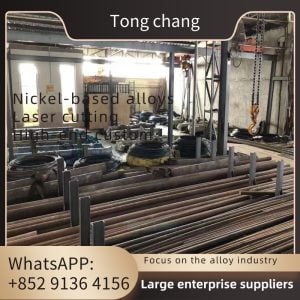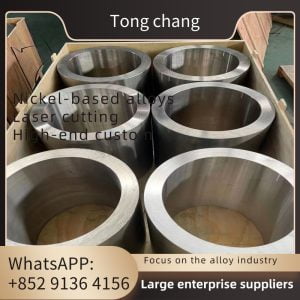| Standard: | ASTM B167, ASME SB167 | Material Grade: | Inconel 600, UNS N06600, 2.4816 |
|---|---|---|---|
| Name: | Nickel Alloy Steel | Technique: | Hot Rolled,Cold Drawn |
| Material: | Nickle Material | Thickness: | 1 – 30 Mm |
| Outer Diameter(round): | 4 – 912 Mm | Length: | 6M, Or As Required |
| NDT: | UT, ET, HT, PMI | Applications: | Boilers, Heat Exchangers, Condensers,Etc. |
| High Light: | hastelloy c tubing, inconel tube | ||
ASME SB167 Inconel 600, UNS N06600, 2.4816 Nickel Alloy Steel
TONG CHUANG GROUP is one of the Nickel Alloy Pipes / Tube / Fitting / Flange supplier in China , our group Inconel alloy 600, alloy 601,alloy 625, alloy 690, alloy 718 , alloy 750 export more than 40 countries now , and won a good reputation from the market .
Features:
Using nickel alloy pipe brings three primary advantages:
Resistance to Heat
Some nickel pipe alloys can endure very high temperatures, making them advantageous in machinery or other environments where intense heat is present.
Resistance to corrosion:
Oxidation reactions cause corrosion. Nickel alloys have a slower rate of oxidation than most metals, meaning they can resist corrosion for longer.
Low Rate Of Expansion:
Many nickel alloys pipes have either a low rate of thermal expansion or a rate of thermal expansion that can be predicted very accurately. This makes them desirable in high-temperature environments where you need a uniform shape.
Manufacturing:
Nickel alloy pipes are made with a complex manufacturing process that begins with the purest materials. Contaminated materials would lead to pipes without the beneficial properties mentioned above. The stages of the manufacturing process include:
- melting
- hot rolling
- acid pickling
- annealing
- wire drawing
- cold rolling/slitting
Throughout the process, quality control is maintained through a wide range of statistical tests.
Grades
There are a number of different grades of nickel alloy pipes. Some of the most popular include:
Nickel 625 Tubing
This grade is comprised of 20 to 30 percent chromium, which is a greater amount than many other nickel alloys. It’s often found in engine exhaust systems.
Nickel 600 Pipe
Nickel 600 offers a handful of unique benefits: it can be joined with many different methods, it’s very workable, and it performs well in very high and low temperatures.
Nickel 601 Pipe
Often used in high temperature environments, Nickel alloy pipe 601 has a high creep rupture strength and good mechanical strength.
Nickel 400 Tubing
Comprised of around 23% copper, Nickel 400 tubing is often used in oil towers, crude petroleum stills, de-aerating heaters, marine projects, heat exchangers, freshwater tanks and gas tanks. Furthermore, it also performs very well in alkaline salt and salt water.
Applications:
The beneficial properties of nickel alloys make them useful in a wide variety of applications. These include:
- Turbine Blades, seals and combustors
- Electric submersible well pump motor shafts
- High temperature fasteners
- Heat exchanger tubing
- Steam generators in nuclear pressurized water reactors
- Sound suppressors
- Race car exhaust systems
- Incinerator boilers
- Rocket planes
- Nuclear power systems
Chemical Composition:
| Element | Nickel + Cobalt | Carbon | Silicon | Iron | Copper | Manganese | Chromium |
| Avg. Nominal % | 72.0 Min | 0.15 Max | 0.50 Max | 6.0 – 10.0 | 1.0 Max | 1.0 Max | 14.0 – 17.0 |








